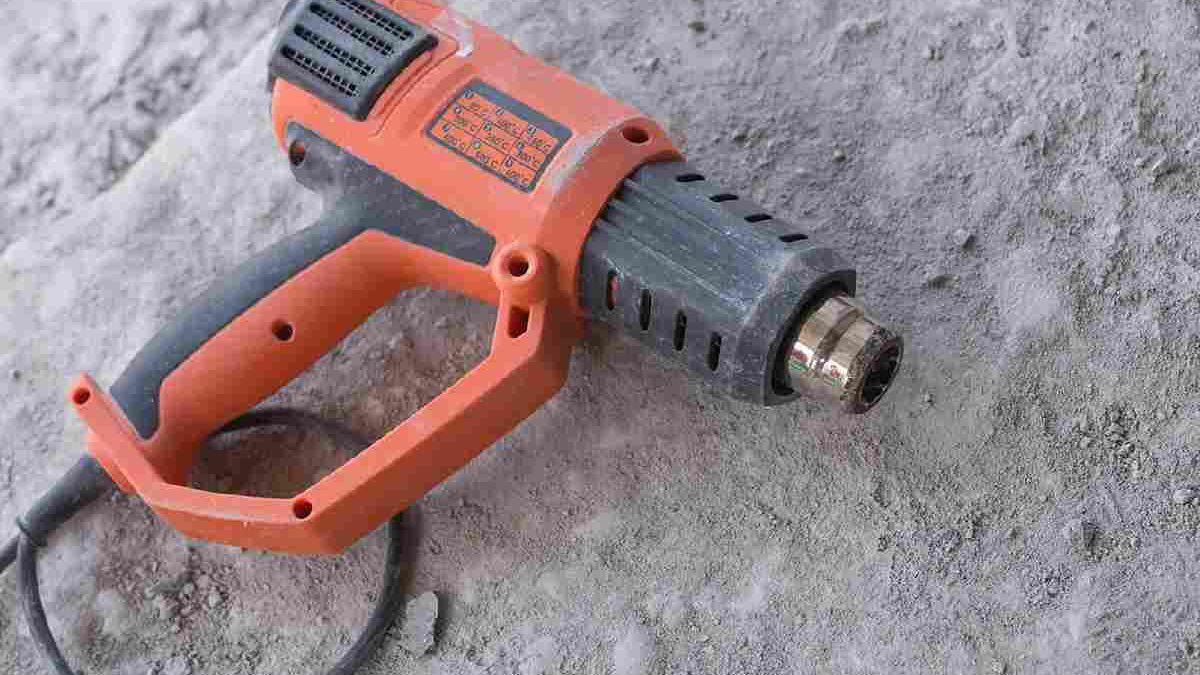Thermal guns, versatile and indispensable tools in the world of equipment, have made their mark across a wide range of applications. With applications spanning various industries, these devices have established themselves as essential companions for professionals and DIY enthusiasts alike. In this comprehensive exploration, delve into the multifaceted world of heat gun technology, shedding light on their diverse applications, key features, and crucial considerations when selecting the right one.
Table of Contents
Understanding Heat Guns
At its core, a heat gun is an electrical device designed to generate and expel a controlled stream of hot air. Regardless of their size and form, all thermal guns share a standard function: the emission of a consistent and precisely regulated flow of heated air.
Applications of these Guns
Thermal guns have garnered widespread recognition for their adaptability, serving as indispensable tools across various domains. Below, uncover the primary areas where these guns play pivotal roles:
- Paint Stripping and Removal
- In the realm of refurbishment and restoration, these guns have proven invaluable for stripping and removing old paint and varnish. The controlled application of heat softens the paint, facilitating its removal without the need for abrasive chemicals.
- Shrink Wrapping
- Industries engaged in packaging employ guns extensively for shrink wrapping purposes. This process involves the application of heat to shrink plastic film tightly around products, ensuring secure packaging for items such as DVDs, electronics, and food products.
- DIY Projects
- DIY enthusiasts frequently enlist the aid of thermal guns for a multitude of tasks. These may encompass bending and shaping plastic materials, molding, and even thawing frozen pipes.
- Electronics Repair
- Professionals working in electronics repair and maintenance frequently turn to these guns for tasks such as desoldering and reworking electronic components. The precise control of temperature is imperative to prevent damage to sensitive circuitry.
- Automotive Repairs
- In the automotive sector, these guns have assumed a pivotal role in tasks ranging from vinyl wrap application to paintless dent removal and adhesive removal, contributing to efficient repair and customization processes.
Key Features to Consider
Selecting the right thermal gun hinges on a thorough consideration of key features tailored to your specific requirements. To make an informed choice, keep the following aspects in mind:
- Temperature Control
- Opt for a gun that affords adjustable temperature settings. This capability empowers users to fine-tune the heat output, guarding against overheating and potential damage to surfaces or materials.
- Airflow Control
- Some projects mandate variable airflow levels. Seek a thermal gun equipped with adjustable airflow settings to achieve optimal results across a range of tasks.
- Nozzle Attachments
- The availability of diverse nozzle attachments is a notable feature to factor in. Different projects may benefit from specific nozzle types—such as reflector nozzles for concentrated heating or wide nozzles for uniform heat dispersion.
- Safety Features
- Prioritize safety by opting for a heating gun equipped with built-in safety features. Elements such as overheat protection mechanisms and cool-down modes enhance operational safety.
- Durability
- The longevity and reliability of a heating gun are closely tied to its construction and materials. Investing in a well-constructed heating gun crafted from high-quality materials ensures sustained performance.
The Versatile Advantage
The hallmark of heat guns lies in their remarkable versatility. Unlike specialized tools tailored to specific tasks, a heat gun’s adaptability renders it a cost-effective and space-saving addition to any toolkit. This flexibility extends its appeal to a broad audience, encompassing both professionals and DIY enthusiasts.
Selecting the Right Gun
The process of selecting the idea of these guns pivots on a nuanced understanding of your intended usage and the features that align with your objectives. When making your choice, consider the following factors:
- Purpose
- Identify the primary tasks for which you intend to use these guns. Diverse applications may require varying temperature and airflow settings.
- Temperature Range
- Ensure that the selected gun offers a temperature range that caters to your project’s unique demands.
- Brand Reputation
- Place trust in established and reputable brands known for producing reliable and durable heat guns. Customer reviews and recommendations can provide valuable insights.
- Price
- While budget considerations are pivotal, it is imperative to strike a balance between your financial constraints and the features you require. Recognize that high-quality guns represent a long-term investment.
Conclusion
In summary, heat guns occupy a prominent position within the realm of tools and equipment, thanks to their ability to generate controlled heat for an array of applications. When choosing a heat gun, deliberate on your specific needs, taking into account factors such as temperature control, airflow adjustability, and safety features. With the right heat gun at your disposal, you gain the capacity to execute a diverse range of tasks efficiently and with precision.

